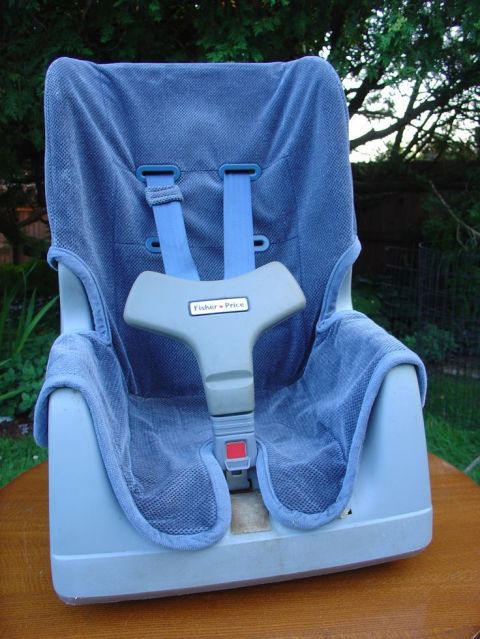The Evolution of Kids Car Seats
Apparently, back in the day, the focus wasn't really on protecting your youngster.
By Lauren Smith
By Lauren Smith
http://www.goodhousekeeping.com/life/parenting/g2870/car-seat-history/
If you're a parent, you probably can't imagine life without a car seat. For starters, it ensures your child's safety and it's also a great tool for carrying kids to and from the car. But did you know they didn't once didn't even exist — even when cars did? Here's a look back at how today's car seat came to be:
Car seats appeared on the scene in the 1930s as a way to keep kids contained in moving vehicles.
Meaning there was essentially no emphasis on safety — just on convenience for the parent. The Bunny Bear Company designed a model that hooks onto the back of a seat — like this vintage one, which you can buy on eBayright now. (Just, please, don't place a real kid in it.)
via eBay
Come the 1940s the chairs were boosted up so kids could see out of the windows.
Sure, a nice feature if little Billy likes to sightsee. But still not very safe.
Getty
In 1962, two different men designed models that took advantage of seat belts.
The '60s marked the beginning taking car seat safety seriously. American Leonard Rivkin (seen above) created a seat that featured a metal frame surrounded by a buckle, while Briton Jean Ames' design was a rear-facing seat with a Y-shaped strap — which is similar to today's models.
Courtesy of Jason Rivkin
ADVERTISEMENT - CONTINUE READING BELOW
Not to be outdone, the Ford Motor Company's "Tot-Guard" hit the market in 1968.
Which was a plastic chair that had a padded area in front of the child's face and acted as a cushion upon impact.
Courtesy of the Ford Motor Company
Soon after, General Motors released their Love Seats.
There was a separate design forchildren and infants, both of which also utilized seat belts to keep them in place. Made from polypropylene and padded with urethane foam, they were touted as lightweight and portable.
Courtesy of General Motors
But this 1969 "Steel Travel Platform" proves safety was still an issue.
This advertisement in the Fall/Winter issue of a Sears catalogue for a vinyl-covered foam pad that kids could sleep or play on in the back of the car is both surprising and alarming.
Courtesy of Sears
It wasn't until the '70s that regulations started to be implemented.
The very first standard was set in 1971 by the National Highway Traffic Safety Administration, which required all seats be held by safety belts and include a harness to hold the child into the seat — though, no crash testing was required.
Courtesy of Swyngomatic
By 1985 the first child passenger safety laws were passed.
This required children under a certain age to have a car seat when riding in a vehicle.
Courtesy of Sears
Today, child safety car seats have strict regulations.
Safety seats are required in all states and must be tailored to the age and weight of the child, so your child will almost certainly need more than one in their lifetime (get the scoop on all the different types of car seats here). Today, the seats come with expiration dates and safety recalls are taken very seriously.
The Good Housekeeping Instituterecently tested car seats on ease of use, and picked three favorites. The above is our infant-seat pick: the Chicco Keyfit 30 Magic











car seats for 4 years old
ReplyDelete